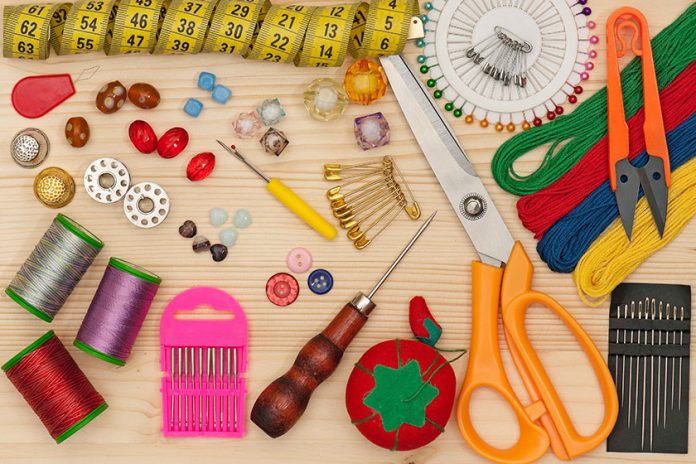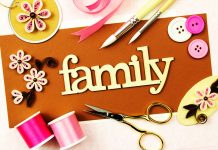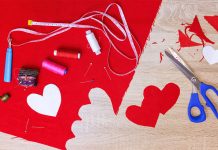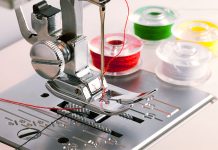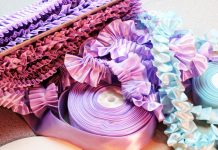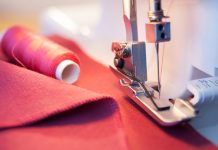In the present day culture, sewing has become mostly a mass manufacturing trade, but there is a rare art form of sewing that is still alive and thriving in our society. If you ask them what they prefer to be called you will get a variety of responses, dressmaker, seamstress, seamster, tailor, sewer, sewist, alterations expert. Whatever they prefer to be called, they are pretty hard to come by, which makes it a valuable craft, and they have a very specialized set of tools and equipment that they utilize to perform their trade.
Why is it important to know the tools and equipment used in sewing?
To define exactly what it is a sewer does, you need to explore a basic classification of sewing tools and equipment and their uses. The importance of defining the tools and equipment in sewing is two-fold. First, it will give you a way to calculate startup costs and, secondly, in learning the functions of sewing tools and equipment, you will be able to define exactly what sort of duties a person in this industry performs.
Classification of sewing tools and equipment and their uses
In determining the classification of sewing tools and equipment and their uses, you need to do your research. Basic, trade focused tools are necessary for this craft! Some of the basic tools and equipment available to the sewer are:
Measuring tools, tracing tools, cutting tools, pinning and sewing tools, and others.
Basic measuring tools:

A measuring tape, which is a ruler that fits in your pocket and, because of its flexibility, allows you to measure around objects, such as a waistline. A tape measure can also measure up to great distances.
A sewing gauge or hem gauge are a couple of different tools used to measure short distances. They are only 6” long, so are commonly used for hemming.
A yardstick can be used for measuring straight, longer distances and for checking grain lines.
A hip curve, just as it sounds, measures areas like the hips, lapels, neck, arms, and anywhere you need to create curved long lines;
And an L-square, which is used to transfer measurements from an original pattern to the fabric you are creating, is an essential tool for a sewer. To define the L-square is a little more complicated, so make sure you learn all you can about this important sewer’s tool and be sure you have your math skills in place.
Basic tracing tools:

Tailor’s chalk and a chalk pencil are used for marking directly on the fabric and can easily be brushed off when the work is complete.
A tracing wheel, whether serrated or smooth, can be rolled onto fabrics to create designs and lines.
Carbon paper, a wax-papery material, lays under the tracing wheel and transfers the design from the wheel to the fabric.
A liquid marking pen does the same job as chalk, but it comes in a variety that can be washed out or one that fades within a 48 hour period of time.
After marking your design or fabric, the right cutting tools are necessary to make the perfect pattern and garment.
Cutting tools:

Cutting scissors, which are just average scissors and are used for a variety of things in the sewing world.
Bent handled shears are made from a high-quality steel that maintains a sharp cutting edge. The 7-12” blades move quite smoothly, cutting the full length of the blades, and they can be used on almost any fabric.
Pinking shears are popular for zigzag sewing or decorative edges and to finish seams. The pinking shears cut an edge that will not ravel.
Thread clippers are a handy little spring-loaded tool that cuts thread.
And a seam ripper is a way to remove thread that is sewn into any fabric without tearing the fabric.
Pinning and sewing tools are also a part of a sewer’s tool kit:

A pincushion holds bare pins and needles for easy grabbing, keeps them in one place neatly, and helps to prevent accidents.
Needles are the actual sewing tool. When threaded, a needle binds the thread to the fabric thus holding your creation together.
Threads of a variety of color and thickness will be used in abundance by a person in this industry.
A thimble serves as a guard for the finger that pushes the needle when sewing;
You can choose from a variety of sewing machines. Different sewing machines have different capabilities depending on the model. Guided by the hands of a capable sewer, a sewing machine makes the job easier and quicker. It also allows for specialized stitching, such as buttonholes and zig-zag.
There are some other tools that would be of great service to a sewer:

An iron is a tool used to remove wrinkles from fabric before, during and after sewing;
An ironing board allows fabrics and garments to be freely ironed and is designed to handle the heat of an iron.
And a sewing table is necessary for laying out your patterns, fabrics, and for keeping your tools all in one place. You might prefer a table that can be lowered or raised, depending on whether you prefer to sit or stand. You can easily find the best sewing table for you with our Top 10 Sewing Table & Cabinets Reviews.
This classification of sewing tools and equipment and their uses is just a peek into the basic tools and equipment in sewing. As you learn this craft you will see that the tools have many different uses and functions. The importance of doing research cannot be stressed enough if you are serious about learning this special craft. There are many different tools and equipment available to the sewer that makes the job easier to perform.
Is sewing a good career path?
The field of sewing is wide open and will always be needed in our society. Even with mass manufacturing, there will always be a need for an individual sewer to make sure things fit properly, to help us make our dream wedding dress, to alter the hem in our jeans. Only qualified sewer’s needs apply though, because this craft carries some importance, that being to be able to make garments that endure the test of time, wear, and tear. So if you feel like it, get the best sewing machine out there and start your endeavor!
 Home
Home Sewing, Embroidery & Serger
Sewing, Embroidery & Serger Cutting machines
Cutting machines Brands
Brands Review
Review

